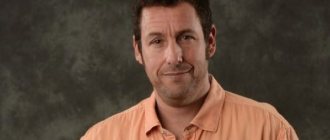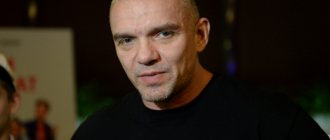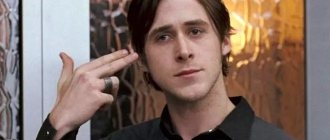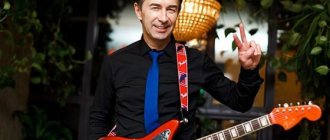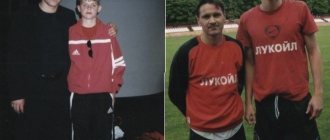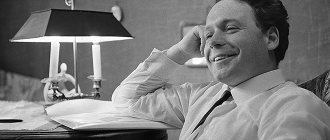Tim Burton doesn't fit into the Hollywood mainstream or the proud wave of "independents." For Hollywood, he is too strange and unpredictable; for auteur cinema, he is too commercially successful and acquainted with first-rate stars. This shaggy, unsociable guy managed to clear a place for himself in a world where supposedly you cannot achieve success without selling your soul to the devil. And he just makes movies that he likes. And it works: we go to every Tim Burton movie because of his name on the poster. And then we joyfully break our spears: is this “the same” Burton or “not the same”?
I have never met a person so clearly out of this world and at the same time in his place. The only place that belongs to him. Johnny Depp on Tim Burton
Tim Burton films
1985 - Pee-wee's Big Adventure. Comedy based on the TV show

1988 - Beetlejuice. Black comedy

1989 – “Batman”. Superhero film based on DC comics

1990 – “Edward Scissorhands.” Fairy tale

1992 – “Batman Returns.” Superhero film based on DC comics

1994 – “Ed Wood.” Biographical drama

1996 – “Mars Attacks!” Fantastic comedy

1999 – “Sleepy Hollow.” Gothic thriller

2001 – “Planet of the Apes.” Social fiction

2003 – “Big Fish”. A parable in the spirit of magical realism

2005 – “Charlie and the Chocolate Factory.” Children's fairy tale

2005 – “Corpse Bride.” Mystical puppet cartoon

2007 - “Sweeney Todd: The Demon Barber of Fleet Street.” A musical about a maniac

2010 – “Alice in Wonderland.” Fantasy

2012 – “Dark Shadows.” Mysticism about vampires

2012 — “Frankenwinnie.” Mystical puppet cartoon

2015 – “Big Eyes”. Biographical drama
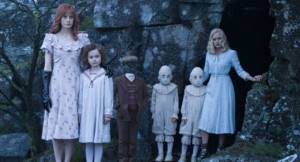
Fantasy The creations of this weirdo in black, and even himself, are often labeled “gloomy.” Burton, without meaning to, became an icon of the goth subculture. A backpack with Jack from “The Nightmare Before Christmas” was probably worn by every teenager who considered himself “different from everyone else.” And when the bright and colorful “Big Fish” was released, where there were no dancing skeletons and killer Martians, critics began to write about “the director’s return to the light side of the Force,” which left Tim in bewilderment. He thought that he had not betrayed himself - he made a very personal film, where he put his emotions from the death of his father.
For some reason, all my films have always been considered dark, except, perhaps, “Pee-wee.” "Batman" was supposedly dark, although now it looks like a children's matinee. The Nightmare Before Christmas was pure horror, but that doesn't stop three-year-olds from singing the songs. I haven't found any of my films to be truly dark.

In "The Nightmare Before Christmas" Tim was a screenwriter and producer, but could not become a director - he was busy with the second "Batman"
We all come from childhood, and so does Tim, with his isolation that can easily be mistaken for gloom. Timothy Walter Burton grew up in the 1960s in Burbank, California. Then it was a quiet suburb of Hollywood, now it is a satellite city of Los Angeles, crammed with the headquarters of studios and television channels. The quiet one-story suburb was turning into a bustling movie district before little Tim's eyes, and he couldn't say he liked it. In addition, the boy had a difficult relationship with his parents, who divided their small reserves of love between Tim and his younger brother Daniel.
The quiet province by the sea could barely hear the echoes of a turbulent life: the Vietnam War, the Cuban Missile Crisis, the fight against segregation, the hippie “summer of love”... And the California sun burned almost all year round, turning the change of seasons into a bedtime story. And little Tim considered the world accessible to him in his senses to be the same surreal fairy tale, strange and ominous. Remember the candy houses in the idyllic town from Edward Scissorhands?

Santa Monica Pier with the amusement park where young Burton went to be sad
If you grew up in the suburbs, you spent your childhood in a place where there is no sense of history, no passions. I don't remember anyone liking the music. And no expression of emotion... You were forced to either adapt and give up part of your personality, or create your own strong inner world where you could feel isolated from others.
Tim grew up withdrawn and would go days without saying a word. With age, communication problems grew - he could only deal with old acquaintances, and was simply afraid of strangers. Recently, a video appeared on the Internet where unexpected journalists with a camera enter the office of young Tim, who was then working as an animator at Disney. Tim in the frame is scared as if he is about to be shot. This explains why he always works with the same people: he is familiar and comfortable with them. It was no coincidence that Johnny Depp, also an introvert, compared the atmosphere on Tim’s set to returning home.
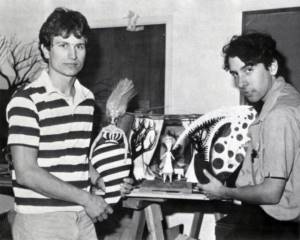
Tim Burton during the Disney "hard labor" (right)
The habit of living in his own world plus a heightened sensitivity to the absurdity of provincial life - this is how a typical Burton hero appeared, a lonely freak with a vulnerable soul. This is Edward Scissorhands, who desperately wants to touch the world - and cannot do so. This is the eccentric pastry chef Willy Wonka, living in his own fairy-tale world. His gloves, according to the director, symbolize his reluctance to contact people.
Even his Batman is like that. It was Burton, and not Christopher Nolan, who was the first director to think about what made a grown man put on a bat suit, and started the tradition of psychoanalytic interpretation of comic books in cinema.
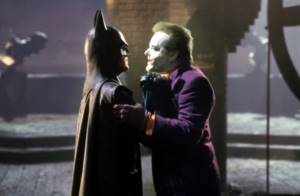
Batman (Michael Keaton), Joker (Jack Nicholson), Penguin (Danny DeVito), Catwoman (Michelle Pfeiffer) are characters with similar traumas and manifestations of mental illness
Burton's unique understanding of the superhero theme made him the ideal director for the film adaptation of Ransom Riggs's The Home for Peculiar Children, entitled Miss Peregrine's Home for Peculiar Children. In children with “special needs” living in a secluded boarding school under the guidance of an equally “special” teacher, Tim saw not the second “X-Men”, but the idea that before saving the world, superheroes should sort themselves out.
I have always perceived these features not as superpowers, but as a kind of disease. These people are not going to save the world and defeat all the villains in the world. No, they learn to accept themselves as they are. Their adaptation to the world is rather similar to what children with developmental or physical disabilities experience.

Burton cast Eva Green in his films only twice (Dark Shadows and Miss Peregrine's Home for Peculiar Children), but plans to continue
One of the facets of a misunderstood and unaccepted personality is an extremely subjective, even inadequate, perception of oneself and one’s creativity. The hero of the biopic of the same name, Ed Wood, “the worst director of all time,” is convinced that his films will go down in history. The artist from the film “Big Eyes” does not think about whether she is creating kitsch or art; At first, she doesn’t even care that her husband passes off her work as his own. As Burton astutely noted, this is the American dream: “You can be successful and famous regardless of your grades.”
Burton's characters can be arranged in order of increasing madness. At one end of the scale there will be Edward Bloom, the harmless traveling salesman-storyteller from Big Fish, at the other - the maniacal barber Sweeney Todd. But there are no ordinary personalities among them. Burton's films operate on the energy that arises when a hero finds the strength to say “No!” the opinion of the crowd in order to defend what is important to him. It is not surprising that his interpretation of Carroll's Alice is a heroic fantasy about a warrior maiden, and not a surreal trip of a well-bred Victorian girl.
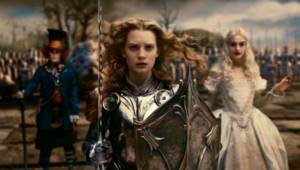
Burton's women are often stronger and more determined than men
I belong to that unfortunate generation for which television has largely replaced reading. I didn’t like reading and still don’t like it.
Movies and television became food for the mind and, more importantly, the emotions of the withdrawn boy who loved to play in the cemetery. At the cinema back then you could watch three low-budget horror or science fiction films in a row for one ticket. Similar trash was shown on TV in those years. The boy was not frightened by monsters - on the contrary, he sympathized with them, considering them more sincere than people.
The Hollywood horror industry has come a long way, with its origins in the neo-Gothic aesthetics of the 19th century (horror's favorite theme of curses comes directly from Gothic novels) and German expressionism of the 1920s. Alfred Hitchcock and Orson Welles studied from the works of Friedrich Murnau, the creator of Nosferatu, and Fritz Lang, the author of the epoch-making Metropolis.
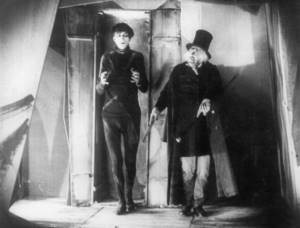
The Cabinet of Dr. Caligari, a classic of German expressionism, looks like Burton shot it: Edward Scissorhands and the Penguin are there
The aesthetics of expressionism is built on contrasts, exaggerated emotions, and a combination of different means of expression (image, music, acting) to achieve a stunning effect. Expressionism is sharp corners, broken lines, exposed nerves and passions in tatters. Visually, it is light and shadows, symbolizing good and evil, which are fighting for the souls of the hero and the viewer. If after “Nosferatu” and “The Cabinet of Dr. Caligari” you look, for example, “The Crow” or “House of Wax” with Vincent Price (Burton’s idol and friend, who to some extent replaced his father), the connection is obvious.
Now take a look at Vincent (1982), Burton's first independent work. In the story of a lonely boy obsessed with horror films, one can discern the germs of almost all of the director’s cross-cutting themes. From this six-minute puppet cartoon you can study the aesthetics of expressionism: there is the contrast of light and shadow, distorted angles, broken proportions, an ominous sound background, and the theatrically elevated intonations of the reader (the same Vincent Price, by the way). “The Cabinet of Dr. Caligari,” to which both this cartoon and “Frankenweenie” are compared, Burton did not watch as a child, but he had enough followers to absorb its aesthetics and make it part of his own.
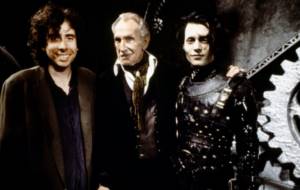
On the set of Edward Scissorhands: Tim Burton, Vincent Price (he played Edward's "father") and Johnny Depp
Burton solves the problem of good and evil, important for expressionists, in his own way: he recognizes that in every person an angel coexists with a monster, and there is no escape from this. That’s why he shot “Batman” as a duel between two madmen (both Batman and the Joker are pretty out of their minds), and “Sweeney Todd” so that you want to sympathize with Todd and Mrs. Lovett, and not with their innocent victims. And in “Dark Shadows” it is unclear who the main sufferer is: the “reluctant vampire” Barnabas or the witch Angelica, who is unrequitedly in love with him.
I identify Batman with the idea of human ambivalence, that there is not white and black, bad and good, but grey. It seems to me that the world is becoming more and more gray, boundaries are blurring, and it is becoming increasingly difficult to recognize good and evil. This applies not only to politics, but to everything that happens to us. Therefore, Batman, who constantly has to face these questions, is a surprisingly modern hero.
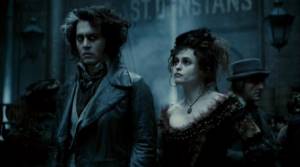
Mrs. Lovett's dreams and real life: "Sweeney Todd" is built on contrasts
Likewise, for Burton it is obvious that life and death are not enemies, but allies. This is why he loves fairy tales - not the taut children's versions, but folklore horror films for adults, which contain the entire Criminal Code from incest to cannibalism. In many ways, his films are an attempt to return to Western culture the hushed topic of death, natural for folklore and frightening for our rational age.
In Beetlejuice, The Nightmare Before Christmas and Corpse Bride, the world of the dead is almost more fun and interesting than the world of the living, and it is certainly no less real. In "Mars Attacks!" Martians shooting earthlings with blasters evokes more laughter than horror. And in “Dark Shadows” there is a scene in which it’s all Burton: the main character talks about love with a group of stoned hippies, and then, after politely apologizing, kills them - because he is a hungry vampire.
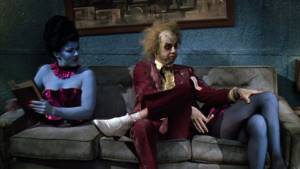
In Burton's afterlife, people stand in lines, sing jazz, and fall in love just as much as in the real world.
Love, blood, life, death, laughter, fear replace each other, like in a kaleidoscope. And that’s what Burton wants - he wants his viewers to experience the same emotions as a lonely boy in a dark hall in front of a magic screen. Well, or at least some emotions.
Burton also owes the visual features of his style to expressionism. Playing with color and light (either black and white, or all the eye-catching shades), juggling with proportions and angles, expressive makeup of the actors (everything about his characters is clear from the first appearance on the screen thanks to well-thought-out images), “seemingly real” scenery , reminiscent of old movies. One of the critics said - and everyone echoed - that Tim Burton makes not movies, but cartoons with live actors.
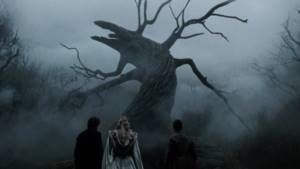
Expressionist Gotham and Gothic Sleepy Hollow
The first film that impressed the boy Tim was “Jason and the Argonauts” (1963), on which the most talented special effects master of his time, Ray Harryhausen, worked. Its special effects were created using stop-motion animation. Since then, Burton, who started out as an animator at Disney, has been convinced that there is nothing better: “Stop-motion animation has an energy that you can’t describe: it makes things come alive.”
“Vincent”, “Frankenweenie”, “The Nightmare Before Christmas”, “Corpse Bride” were filmed in this “old-fashioned” technique. Experience with computer graphics in "Mars Attacks!" Tim considered it unsuccessful, but the use of “green screen” in “Alice” was justified: it was required by the crazy world and the epic plot. But he has no reverence for digital technology.
It's like falling down the rabbit hole of, "What the hell is going on?" But in the end you still hit the ground. It's the same with technology. They are finite. And exaggerating everything is a characteristic feature of Hollywood.
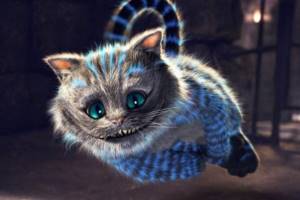
From "Mars Attacks!" Computer graphics have come a long way from Alice in Wonderland
The desire for tangible realism and at the same time emphasized conventionality and theatrical deliberateness of his worlds makes Tim an ideal employer for decorators. For Charlie and the Chocolate Factory, every scene was built in full, with a 360-degree view—no compromises. The chocolate river in the same film is not drawn, but real - although, of course, not made of chocolate. And the squirrels are real too - forty trained animals, and not just one multiplied on a computer.
In Sleepy Hollow, all the “location filming” was done on a sound stage, and the town was completely rebuilt, just like for old Westerns. In Miss Peregrine's Home for Peculiar Children, Burton made compromises by agreeing to use digital special effects. But even here there is a real old mansion, where it was interesting for young actors to gather not only for filming, but also between takes. In a world taken over by augmented reality, Tim remains a consistent retrograde. Because magic is only what you can touch with your hands.
When you watch some of Fellini's films, you see that he understood this. You feel the magic, watch the lights and decorations; they create this whole environment. And behind them lies magic, but it is beyond your control - we are not given the power to control the elements.
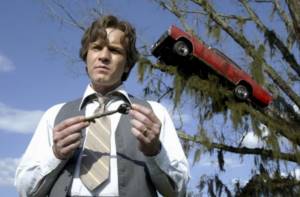
“No, we’ll have to hang the car on a tree!” - Burton said on the set of "Big Fish"
People who influenced Burton's work
According to many researchers of the director’s work, his women had a strong influence on his creations.
Burton's work was especially influenced by the former stripper Lisa Mary, later an actress and artist. After a long romance, they got married in 1992. They lived together until 2001.
Over the years, the most characteristic films of Burton's style were shot: “Ed Wood”, “Edward Scissorhands”, “Sleepy Hollow”, etc.

The filming of the film "Edward Scissorhands" marked the beginning of Tim's long collaboration and friendship with Johnny Depp. The actor tops the list of movie stars who regularly star in Burton's films.
* * *
Tim Burton's superpower is the ability to put his soul into his work and not take on films where there is no room for his soul. At the same time, he manages, at the very least, to exist according to the laws of the Hollywood establishment, finding smart producers for his films, and a sufficient budget (of something, but he has never been accused of overspending - Terry Gilliam, envy in silence). Therefore, he can make strange, scary and funny films until the end of his days. And even those who believe that Burton “is no longer the same” will expect new products from him.
Burton is not a person. Burton is a team. Over the years, Tim has formed a group of people who make his films especially recognizable. So who does Tim Burton work with most often?
early years
Timothy Walter Burton was born in Burbank on August 25, 1958. His father, Bill, was a former baseball player who, after retiring from his sports career, took a job with the government department responsible for the city's parks and recreation areas. Jean's mom ran a store that sold cat supplies.
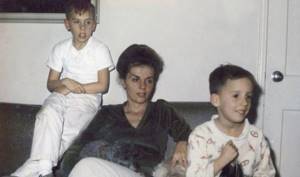
Tim Burton as a child with his mother and younger brother Socialization at school was mixed: Tim didn’t particularly want to study and socialize, however, he liked water polo, and he became a member of the local team. A loner by nature, Burton preferred to spend his free hours in movie theaters or developing his own film projects.
It is believed that the future director began making short films in his yard at the age of 8. Almost none of that material has survived. There was a cemetery near the house, which probably also left an imprint on Burton’s vision of the world.
In 1976, Tim entered the California Institute of the Arts, where he learned the basics of animation. Three years later he got a job at the Disney studio. His career in the company can hardly be called smooth; various things happened: misunderstandings with superiors, promotions and transfers to other departments. Under the auspices of Disney, Burton released the animated short film Vincent (1982). Even then, many noted how different the style of Tim and his employers was.
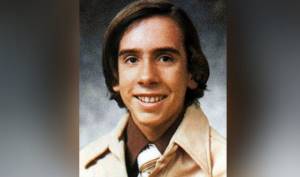
Tim Burton in his youth The story of Frankenweenie (1984) pushed both parties to end their relationship. Disney management considered the cartoon about the animated corpse of a dog too scary for children. Many years later, the animated short was developed into a full-fledged cartoon.
Tim Burton now
Once a director does not appear in public for a while, all sorts of rumors arise about his potential projects.
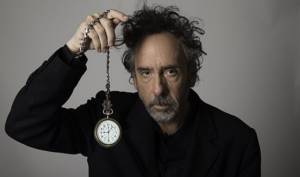
Tim Burton turns 60 in 2021. Tim's work on Dumbo (2019) is known for certain. In addition to Dani DeVito, Michael Keaton and Colin Farrell, Eva Green also takes part in the creation of the film. Burton considers the actress the embodiment of the “old Hollywood” style, so he is glad to return to cooperation again and again. Trailer for the film directed by Tim Burton “Dumbo” Among the unconfirmed information, you can find news about the filming of a project for Netflix.
Post Views: 86



